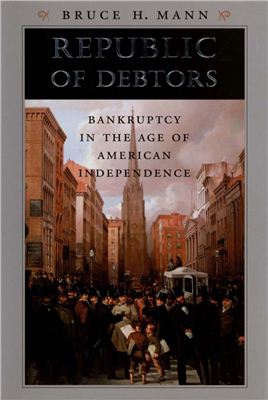Harvard University Press, 2003. - 358 Pages.
This subtle, wide-ranging study examines changing attitudes towards insolvency and their importance to the economy and self-image of the early American republic. Mann, a professor of law and history at the University of Pennsylvania, shows how debtor-relief movements like Shay's Rebellion, a post-Revolution wave of business failures and the need to pay off the public Revolutionary War debt made the problem of debt central to the politics of the new Republic, while the growth of consumer and credit markets enmeshed ever greater portions of the public in debt. A complex imagery of manhood, honor and dependency surrounded the perception of debt in the public mind, while debtors began to invoke the Rights of Man as an argument against debtors' prison. The result, Mann argues, is that by the end of the 18th century insolvency increasingly came to be viewed as economic misfortune rather than moral failure-but only for some. Bankruptcy laws were written to shield wealthy commercial debtors, while broke farmers and workers continued to face prison. Mann examines the political, class and regional antagonisms surrounding the issues of debt and bankruptcy, and draws on newspapers, popular literature and profiles of individual debtors to evoke the complex emotions aroused by debt. The result is an elegantly written blend of economic, political and cultural history that puts in context a problem that is still with us today.
This subtle, wide-ranging study examines changing attitudes towards insolvency and their importance to the economy and self-image of the early American republic. Mann, a professor of law and history at the University of Pennsylvania, shows how debtor-relief movements like Shay's Rebellion, a post-Revolution wave of business failures and the need to pay off the public Revolutionary War debt made the problem of debt central to the politics of the new Republic, while the growth of consumer and credit markets enmeshed ever greater portions of the public in debt. A complex imagery of manhood, honor and dependency surrounded the perception of debt in the public mind, while debtors began to invoke the Rights of Man as an argument against debtors' prison. The result, Mann argues, is that by the end of the 18th century insolvency increasingly came to be viewed as economic misfortune rather than moral failure-but only for some. Bankruptcy laws were written to shield wealthy commercial debtors, while broke farmers and workers continued to face prison. Mann examines the political, class and regional antagonisms surrounding the issues of debt and bankruptcy, and draws on newspapers, popular literature and profiles of individual debtors to evoke the complex emotions aroused by debt. The result is an elegantly written blend of economic, political and cultural history that puts in context a problem that is still with us today.

